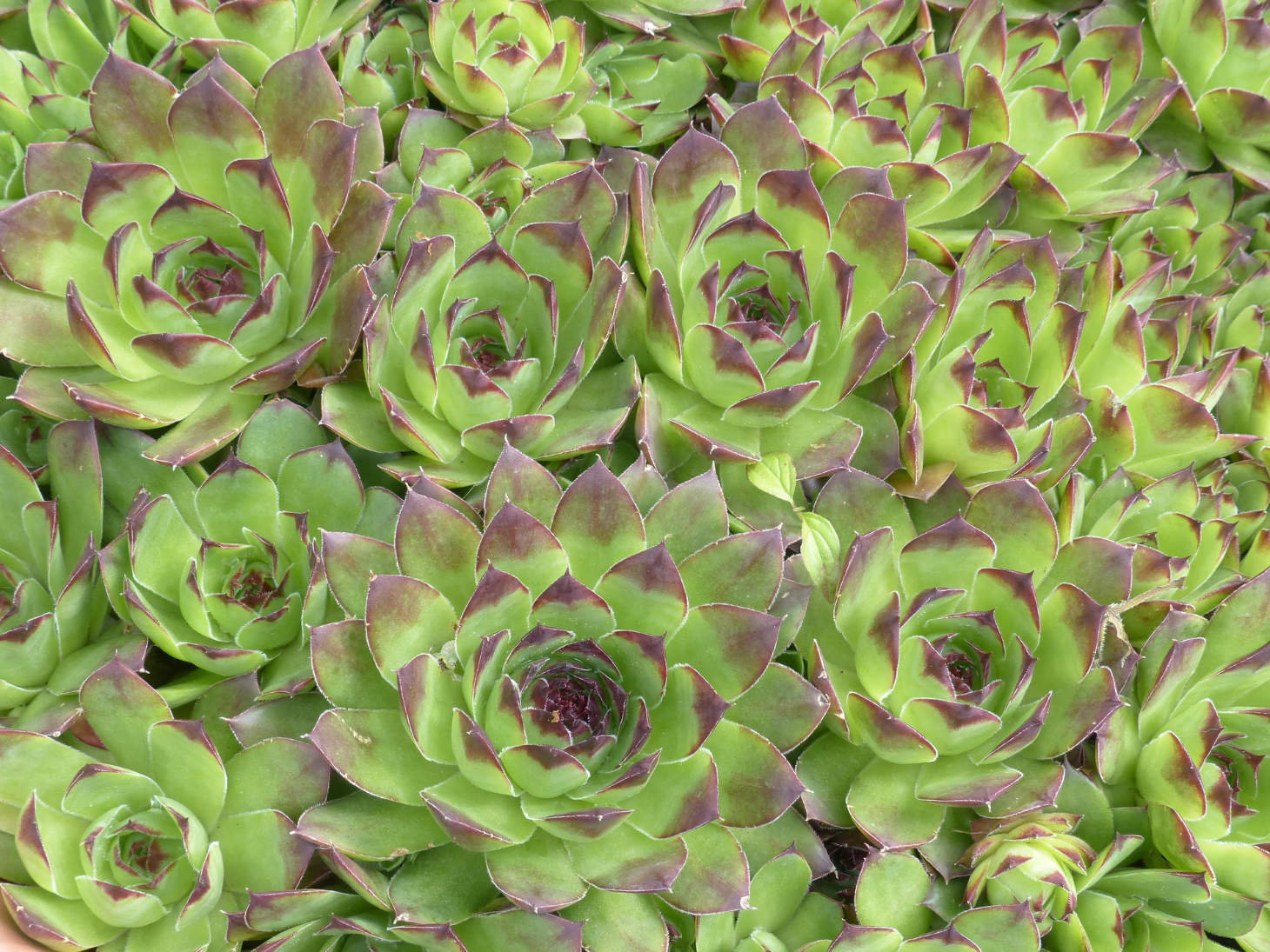Growing Hens and Chicks Succulents
Growing hens and chicks is a fun and easy way to add unique texture to your garden. These hardy succulents form adorable rosettes that spread quickly, creating a living carpet of green and colorful foliage. Hens and chicks thrive in poor soil and sunny spots, making them perfect for rocky areas or containers where other plants struggle. They are also one of the few plants that can survive cold winters and come back as if nothing ever happened!
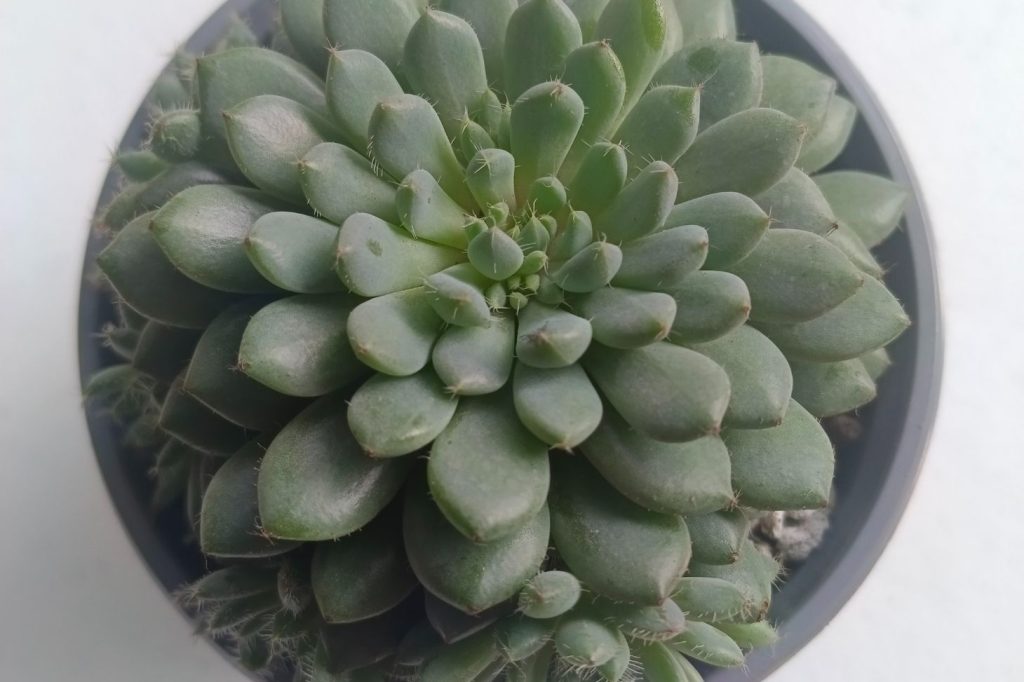
You don’t need a green thumb to grow these low-maintenance plants. They’re drought-tolerant and can handle a wide range of temperatures. Plus, they multiply on their own, so you’ll soon have plenty to share with friends or expand your garden.
Key Takeaways
- Hens and chicks are tough succulents that grow well in sunny, dry areas
- They need little care and spread easily, making them great for beginners
- You can grow them in various spots, from rock gardens to containers
Getting Started with Hens and Chicks
Hens and chicks are fun and easy-to-grow succulents. They’re great for beginners and add charm to any garden. Let’s explore the basics, species options, and what you need to start planting.
Understanding the Basics
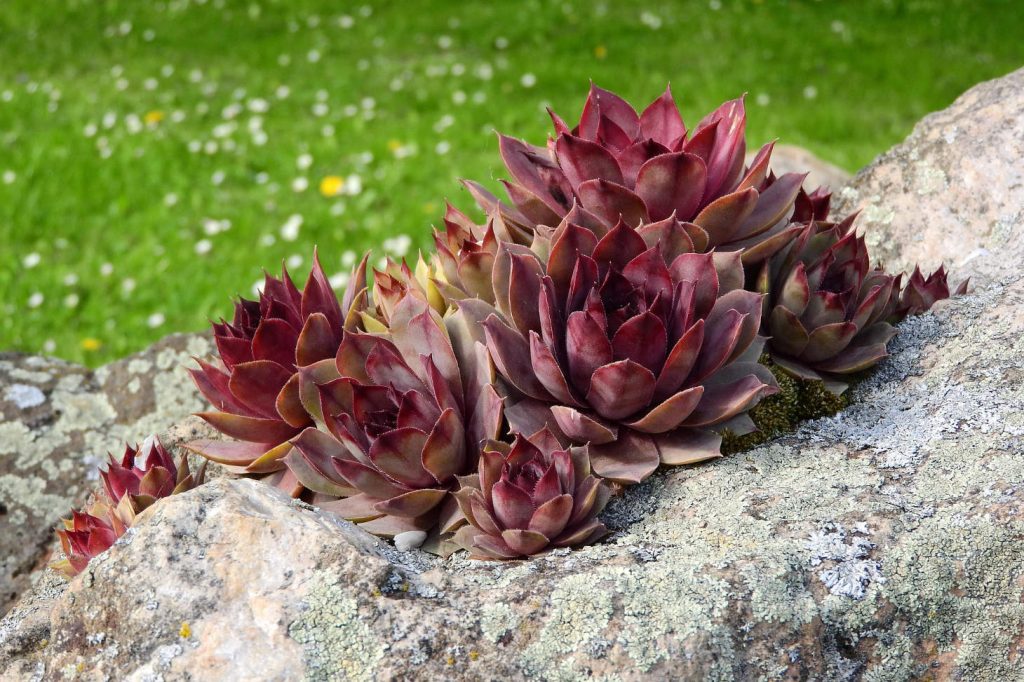
Hens and chicks are part of the Crassulaceae family. They’re tough little plants that can handle different climates. The “hen” is the main plant, and the “chicks” are the smaller ones that grow around it.
These plants are perennials, so they come back year after year. They like sunny spots and don’t need much water. Hens and chicks grow in spring and summer, but their growth can be considered “slow to moderate” compared to some other plants.
You can plant them in the ground or in pots. They’re perfect for rock gardens or as cute decorations on your porch.
Choosing the Right Species
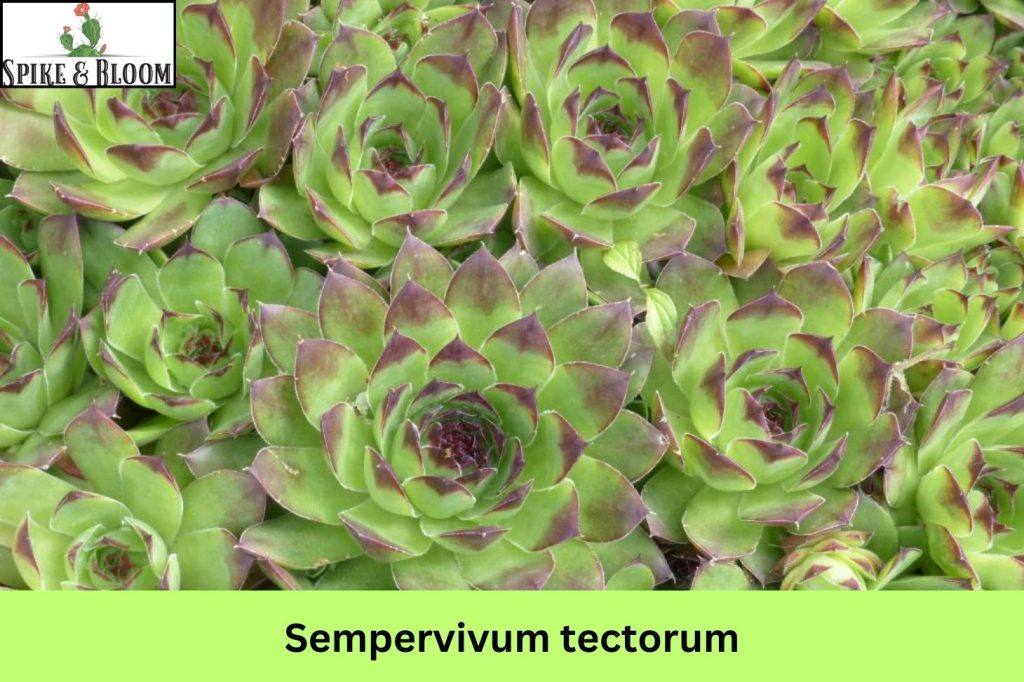
There are many types of hens and chicks to pick from. Sempervivum tectorum is a popular choice, often called Jupiter’s Beard, Jupiter’s Eye, Thor’s Beard, Thunder Plant, or Liveforever. But the world of Sempervivum offers many other fascinating varieties to explore.
Some varieties have green leaves, while others are red, purple, or even blue. The leaves can be pointy or rounded. Some types grow bigger than others.
Think about where you want to put your plants. If you have a small space, go for smaller varieties. For a big garden, you can mix different types for a cool look.
Ask at your local garden store about which kinds grow best in your area.
Essential Supplies for Planting
To start your hens and chicks adventure, you’ll need a few things:
- Well-draining soil: Mix regular potting soil with sand or perlite.
- Containers: Use pots with drainage holes or shallow trays.
- Small shovel or trowel
- Gravel or small rocks for drainage
- Gloves (optional, but helpful)
If you’re planting outside, pick a sunny spot. For indoor plants, choose a bright window. Get your soil ready by mixing it with sand. This helps water drain quickly.
Don’t forget to grab some cute pots or plan a space in your garden. Hens and chicks don’t need big containers, so you can get creative!
Planting and Soil Requirements
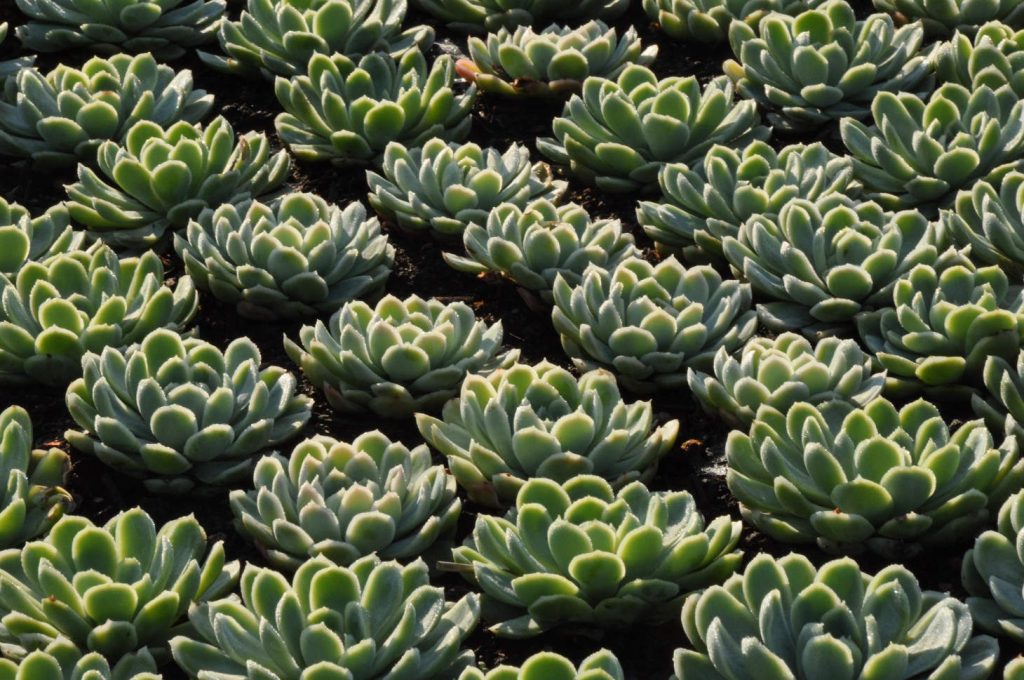
Hens and chicks plants need the right soil and planting conditions to thrive. Let’s look at how to choose soil and containers, and how to plant these easy-care succulents.
Selecting Soil and Containers
Hens and chicks love well-draining soil. Mix regular potting soil with sand and gravel to create the perfect gritty mix. You can also use a pre-made succulent mix.
Avoid heavy soils that hold too much water. These can cause root rot. Add perlite or pumice to improve drainage if needed.
Mixing your own succulent soil is an option, but gathering ingredients and dealing with leftovers can be a hassle.
Our premium succulent soil makes it simple! It’s expertly blended for great drainage and airflow, creating the perfect environment for your Sempervivum to grow.
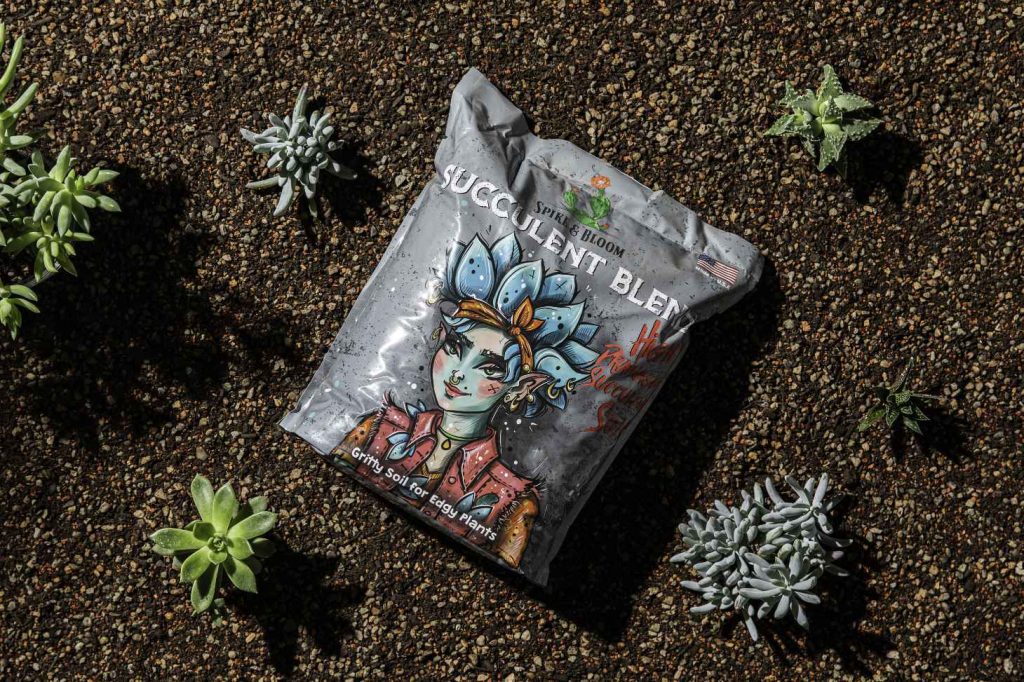
Skip the mess and start planting today. Try our soil now!
Clay pots work great for hens and chicks. They allow excess water to evaporate quickly. Make sure any container you use has drainage holes in the bottom.
For garden beds, add sand and gravel to your existing soil. This helps prevent water from pooling around the roots.
Planting Your Hens and Chicks
To plant hens and chicks, dig a shallow hole slightly bigger than the root ball. Place the plant in the hole at the same depth it was in its original container.
Fill in around the roots with your gritty soil mix. Pat the soil gently to remove air pockets.
Space plants 12-18 inches apart in garden beds. This gives them room to spread. In containers, you can plant them 6-12 inches apart if you are only working with a few plants. Eventually, they fill in. You can plant them close together but you will need many more to achieve a filled in look to your container. Otherwise, space them out a bit in the container and let them fill in over time. The plants will know just where to spread!
Water lightly after planting. Don’t soak the soil. Hens and chicks store water in their leaves and don’t need much to get started.
Sunlight and Watering Needs
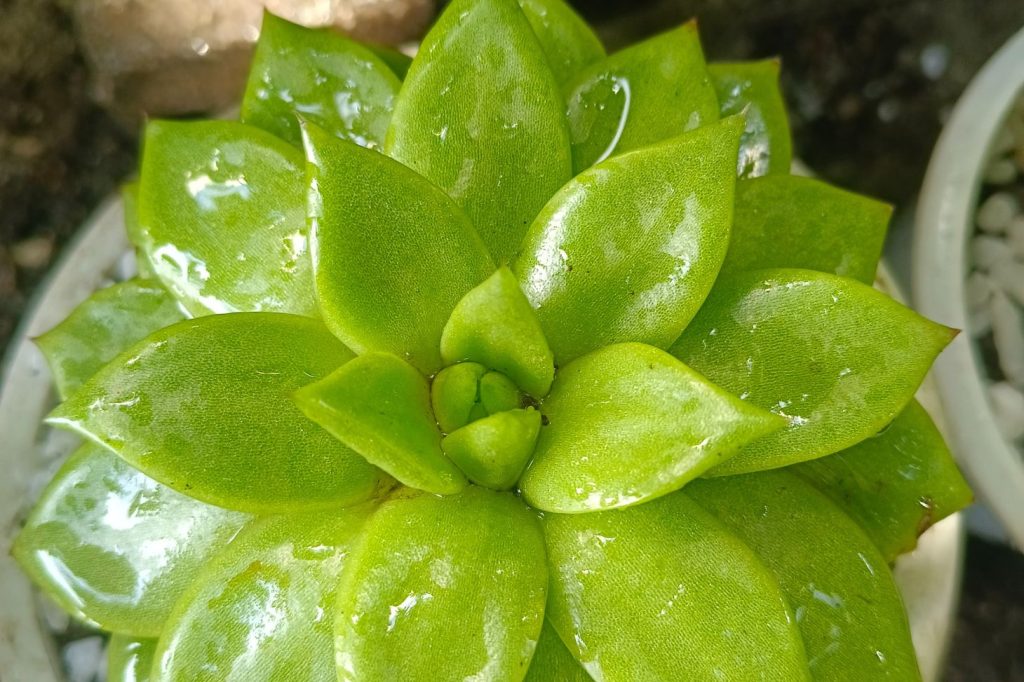
Hens and chicks thrive with plenty of sunshine and little water. These tough plants can handle dry conditions but need the right balance to stay healthy and vibrant.
Understanding Light Requirements
Hens and chicks love bright light. They do best in full sun, soaking up 6-8 hours of direct sunlight daily. This helps them grow strong and keeps their colors vivid.
In very hot areas, a bit of partial shade in the afternoon can be good. It protects them from scorching. If you’re growing them indoors, put them near a sunny window.
Without enough light, your plants might stretch out and lose their compact shape. If this happens, move them to a brighter spot.
Watering Your Succulents
Hens and chicks are drought-tolerant champs. They need very little water to survive. In fact, too much water can harm them.
Let the soil dry out completely between waterings. In summer, you might water every 7-10 days. In winter, cut back even more.
When you do water, soak the soil thoroughly. Then let it drain fully. Never let your plants sit in standing water.
If you’re not sure, it’s better to underwater than overwater. These tough little plants can bounce back from drought but easily rot with too much moisture.
Propagation and Maintenance
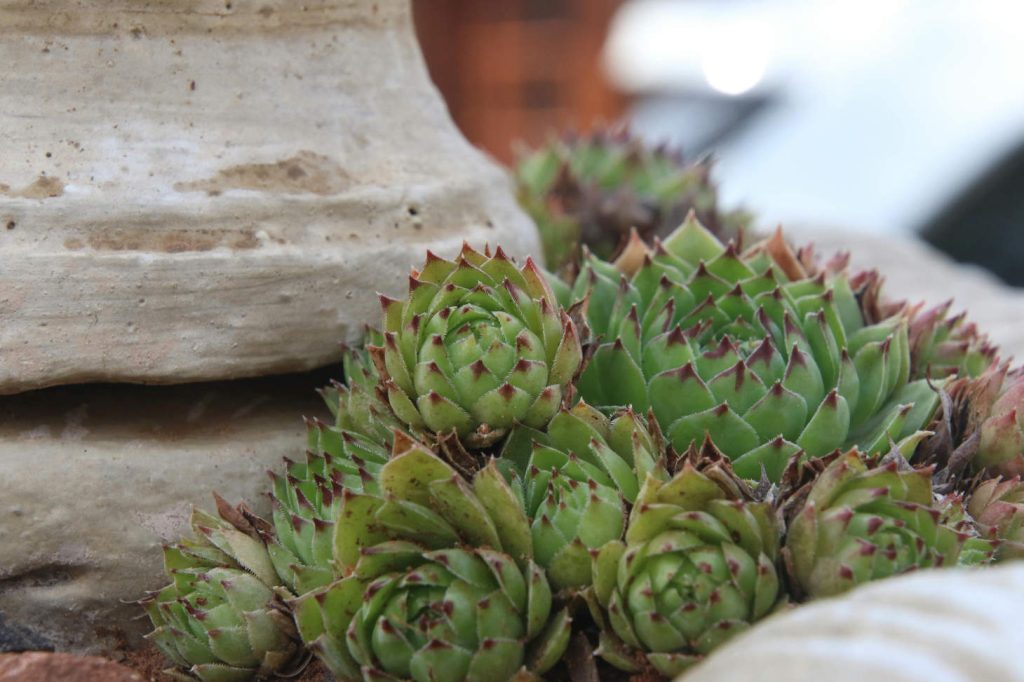
Hens and chicks are easy to grow and care for. They spread on their own and need little attention. Here’s how to help them thrive in your garden.
Propagating Hens and Chicks
Hens and chicks make more plants all by themselves. The mother plant (hen) grows baby plants (chicks) around it. You can help them spread even more.
To make new plants, gently separate the chicks from the hen using a twisting motion or a sterilized knife. Make sure each chick has some roots. Let the chicks dry for a day or two. This helps them heal.
Plant the chicks in well-draining soil. Water them lightly until they take root. In about a month, they’ll be growing strong.
Daily Care Tips
Hens and chicks don’t need much care. They’re tough plants that can handle a lot. Here are some tips to keep them happy:
- Water them only when the soil is dry. They don’t like wet feet.
- Give them lots of sun. They love bright light.
- Use sandy, well-draining soil. Regular potting soil holds too much water.
- Don’t fertilize often. Once a year is enough.
If your plants look stretched out, they need more light. Move them to a sunnier spot.
Seasonal Maintenance Routines
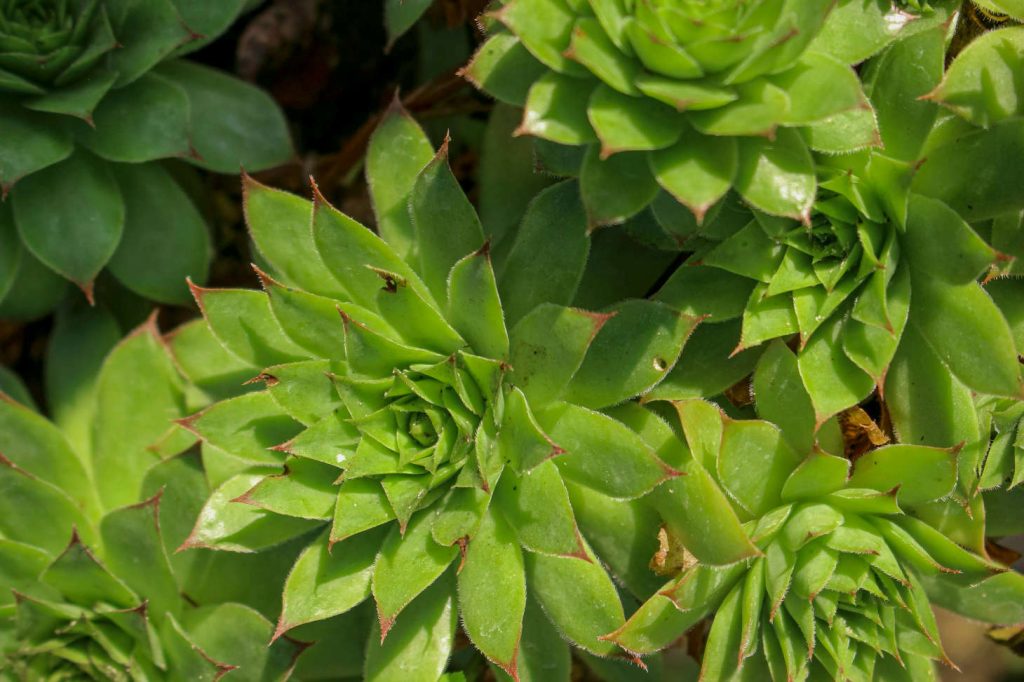
Hens and chicks change with the seasons. In spring and summer, they grow the most. In fall and winter, they slow down.
Spring:
- Remove any dead leaves
- Divide crowded plants
- Start fertilizing lightly
Summer:
- Water more often if it’s very hot
- Protect from extreme heat if needed
Fall:
- Stop fertilizing
- Water less as days get cooler
Winter:
- Only bring potted hens and chicks indoors during winter if you are worried about the pot cracking.
- Most people just leave their hens and chicks alone all winter. These little plants are quite cold tolerant and can take sub-freezing temperatures like a champ.
In all seasons, watch for pests like mealybugs. Remove them by hand or with rubbing alcohol if you see any.
Troubleshooting Common Problems
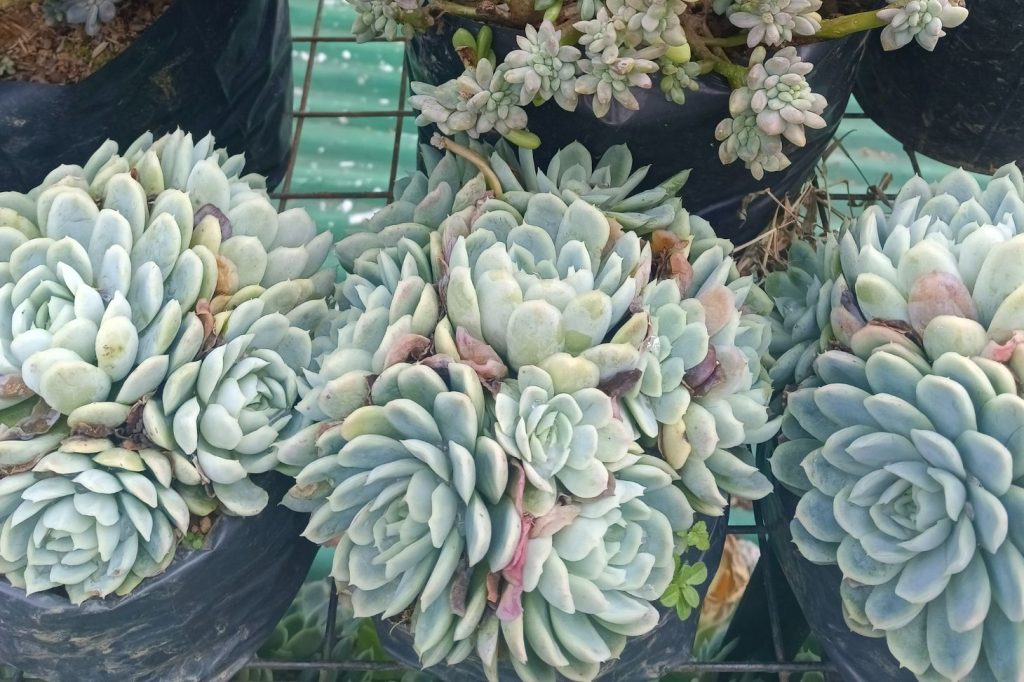
Growing hens and chicks can be tricky sometimes. You might face a few issues, but don’t worry! Here’s how to handle the most common problems.
Preventing and Treating Diseases
Root rot is a big concern for hens and chicks. It happens when the soil stays too wet. To avoid this, make sure your plants have good drainage. Use a pot with holes and a well-draining soil mix.
If you see mushy, black roots, it’s time to act fast. Gently remove the plant from its pot. Cut off any rotten parts with clean scissors. Let the plant dry out for a day, then replant it in fresh, dry soil.
Keep an eye on the temperature and humidity. Hens and chicks prefer moderate temperatures between 65 and 75 degrees Fahrenheit and can tolerate dry conditions. Too much heat and moisture can lead to fungal diseases. If you see spots on the leaves, move your plant to a cooler, drier spot.
Dealing With Pests
Mealybugs and spider mites are common pests for hens and chicks. Look out for tiny white spots or webs on your plants. If you spot them, act quick!
For mealybugs:
- Dab them with a cotton swab dipped in rubbing alcohol
- Spray the plant with neem oil
For spider mites:
- Rinse the plant with water to knock them off
- Use insecticidal soap if the problem persists
To prevent pests, keep your plants healthy. Don’t overwater or overfertilize. A stressed plant is more likely to get bugs. Use a light fertilizer only during the growing season. And always check new plants before adding them to your collection.
Frequently Asked Questions
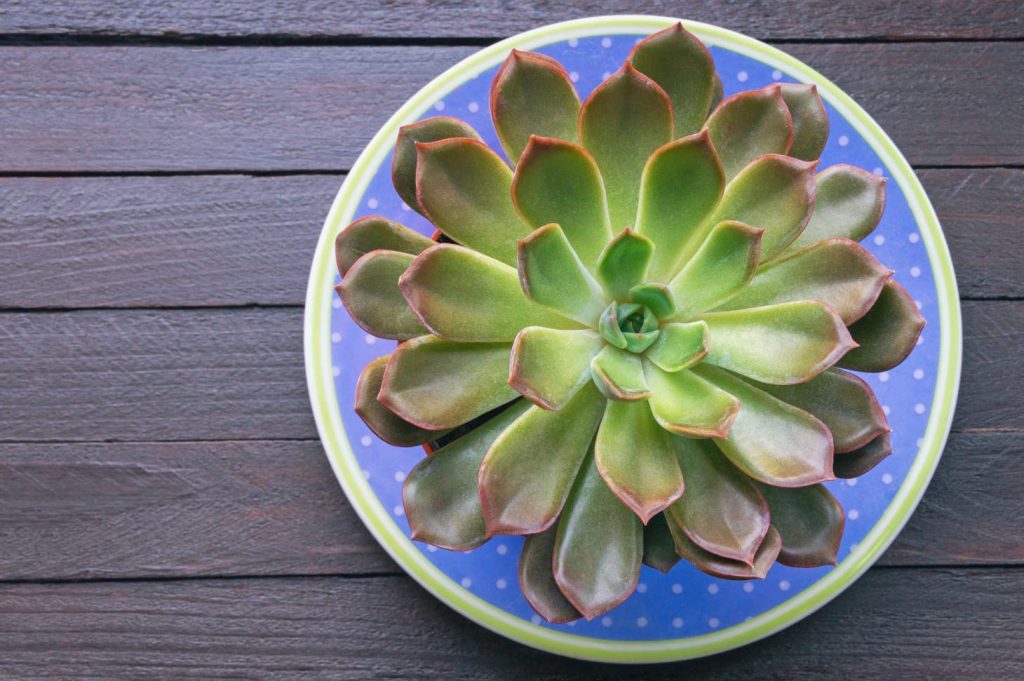
Growing hens and chicks can be tricky. Here are some key things to know about potting, propagation, indoor care, flowering, plant health, and sunlight needs.
How do I pot hens and chicks plants correctly?
Use a wide, shallow pot with drainage holes. Fill it with well-draining cactus or succulent soil mix. Gently remove the plant from its original container and place it in the new pot. Don’t bury the leaves – keep them above soil level.
Water lightly after planting. Allow the soil to dry out between waterings.
What are the steps to propagate hens and chicks from seeds?
Collect seeds from a mature plant after it flowers. Sow them in a tray filled with succulent soil mix.
Place in bright, indirect light. Seedlings should sprout in 2-3 weeks. When they’re big enough to handle, transplant to individual pots.
Can you grow hens and chicks indoors, and how?
Yes, you can grow hens and chicks indoors. Put them near a sunny window that gets at least 6 hours of light daily. A south-facing window is ideal.
Use a pot with drainage holes and succulent soil. Water sparingly – let the soil dry out between waterings. Provide good air circulation to prevent fungal issues.
What’s the deal with hens and chicks flowering?
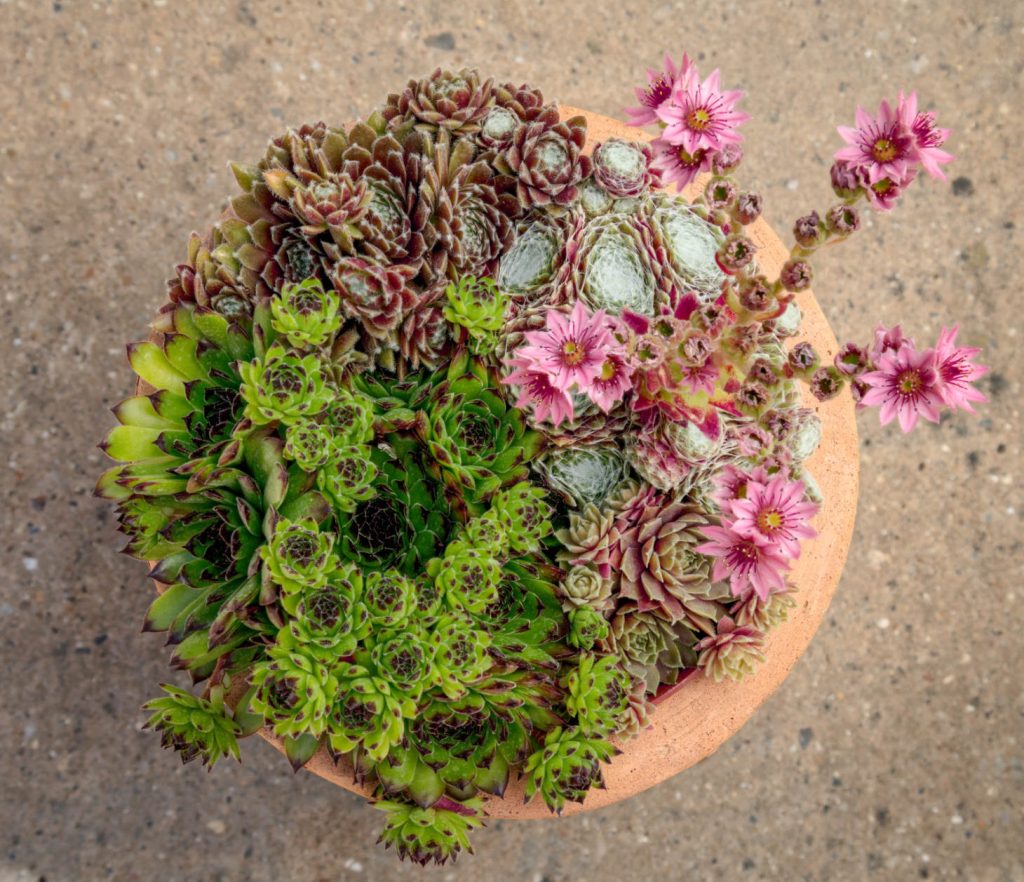
Hens and chicks flower rarely, usually after 3-4 years, but they can bloom earlier due to stress or overcrowding. When they do, a tall stalk grows from the center of the plant with small flowers on top.
After flowering, the main plant (the “hen”) dies. But don’t worry – it will have produced plenty of offsets (the “chicks”) to take its place.
What are the signs of an unhealthy hens and chicks plant?
Look for soft, mushy leaves – this often means overwatering. Brown, crispy leaves can indicate underwatering or too much sun.
Stretching or elongated growth means the plant needs more light. Black spots might be a sign of fungal disease. Remove affected parts and improve air flow.
How much sunlight do hens and chicks need to thrive?
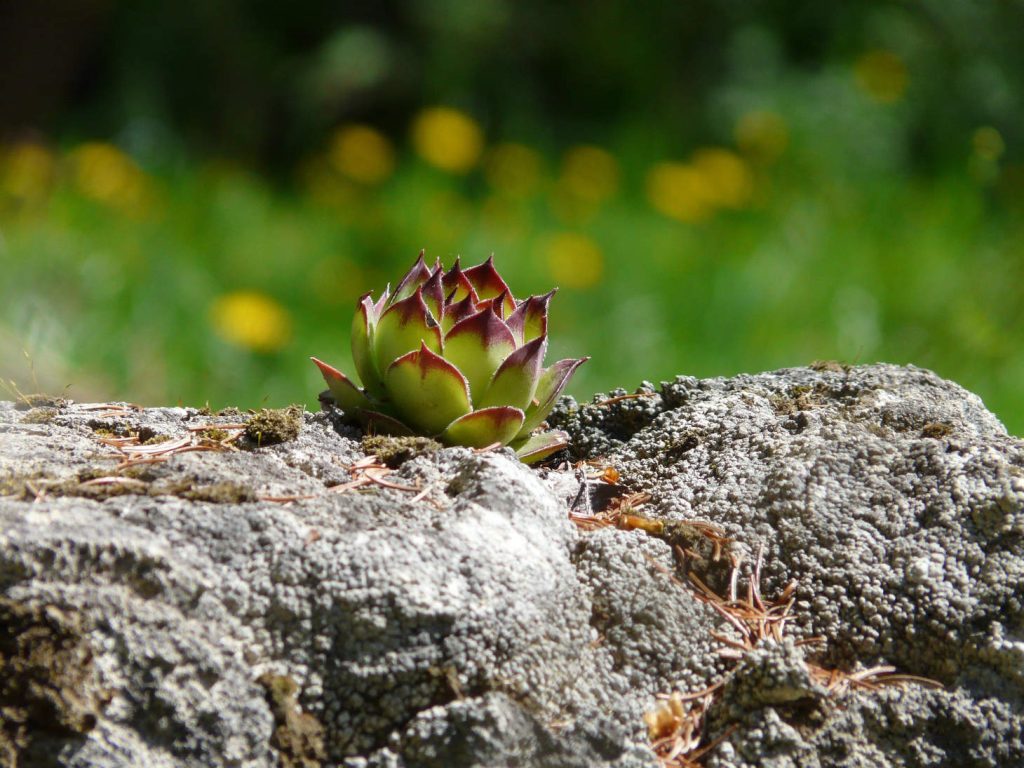
Hens and chicks love sun. They need at least 6 hours of direct sunlight daily.
In very hot climates, they might appreciate some afternoon shade. Indoors, place them in your brightest window or use grow lights to supplement.

